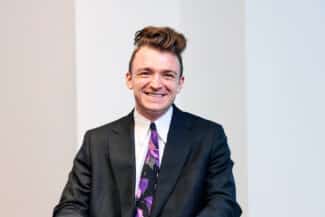99 problems and a claim is one
09.04.2021
In 2020, the career of Jay-Z (rapper, entrepreneur, celebrity and household name mispronounced by many) seemed to have taken an unexpected turn. A video was uploaded to YouTube appearing to show the star rapping to some of the most well-known words in literature – Shakespeare’s “To be, or not to be” soliloquy from Hamlet.
Not content with paying homage to the bard, Jay-Z continued to stay unpredictable with further uploads, including a cover of “We Didn’t Start The Fire” by Billy Joel and the Book of Genesis from the Bible.
However, shortly after release, these videos disappeared from the platform and were replaced with notices informing the public that they had been removed due to the filing of a DMCA takedown request by Jay-Z’s publishing company, Roc Nation, on the grounds that: “This content unlawfully uses an AI to impersonate our client’s voice”.
It transpired that these videos originated not from Jay-Z himself, but from the account of YouTuber Voice Synthesis, who used an open-source program, Tacotron 2, to digitally impersonate Jay-Z’s distinctive voice.
Deepfakes
These videos add to the long growing list of examples of deepfakes – a term used to describe a photo, video or audio clip which has been digitally manipulated to show something that did not actually happen. The legal questions surrounding this particular sort of creation are especially complex.
Early deepfakes involved mashing together two sources of media to generate a Frankenstein’s monster creation and ranged from the comical to the disturbing. Nicholas Cage’s face was superimposed on top of other actors for fun, Barack Obama’s face overlayed on that of comedian Jordan Peele’s and numerous celebrities’ likenesses imposed on to pornographic videos showed how disinformation could so easily be manufactured.
The creation of deepfakes relies on AI technology. In the case of the early examples, the technology allowed faces to be mapped convincingly onto those of others but more recent examples in the context of music have gone a step further.
The company Open AI have illustrated through their Jukebox project how they are able to generate music, complete with lyrics, in the style of a wide range of artists. They have created deepfakes of Elvis, Simon and Garfunkel, Frank Sinatra, 2Pac and others, where the artist’s voice is added to completely new and original music and lyrics. The origin of the music and lyrics is the AI algorithms themselves which function by analysing a database of over 1.2 million songs, along with accompanying lyrics and metadata, spitting out new audio clips of up to several minutes in length.
Intellectual property
AI technology, such as that used to generate these new works, involves algorithms that allow the software to learn from the data input, and to make independent decisions and evolve organically. The engineers of this technology can be viewed as merely setting the parameters of the output and are not involved in the creative process.
Historically, the ownership of copyright in computer generated works was not a controversial question, since the technology was being used as a tool to author the work, just like a pen and paper. However, in this new form of computer generated works, the technology is not merely a tool.
The primary questions for how copyright is approached in this context are (i) does copyright even subsist in these works and (ii) if it does, who should it be attributed to?
If copyright was deemed not to arise in these works, it would have wide ranging and significant commercial implications. The content would be free to use by anyone, and for those unwilling to pay the market rate for a licence to use established copyright works, the option would exist to create an affordable, believable imitation.
If copyright does arise, then what of the authorship in these works? Some jurisdictions (Spain, Germany, US) specifically prohibit copyright works being attributed to a non-human author. But UK legislation specifically addresses the question, appearing to attribute authorship in these works to the programmer of the technology,, as s9(3) of the Copyright, Designs and Patents Act (CDPA) states: “In the case of a literary, dramatic, musical or artistic work which is computer-generated, the author shall be taken to be the person by whom the arrangements necessary for the creation of the work are undertaken.”
With s178 of the CDPA defining a computer-generated work as one that is “generated by computer in circumstances such that there is no human author of the work”. Upon digestion of these provisions, the argument would likely shift to an assessment of who the law considers the person making the arrangements for the work generated to be? Is this simply the person who codes the algorithms or should the data inputted into the system be taken into account?
Conclusions
Where does the initial analysis above leave Jay-Z? At this moment in time, the clips mentioned at the start of this article have been reinstated to YouTube “pending more information from the claimant” and there is no doubt of concern as to whether copyright will be able to be asserted.
It has been hypothesised that an alternative cause of action in “passing off” could be available in these scenarios, but the proof required to succeed with such a claim is significant. Case law in the US would support arguments related to impersonation or plagiarism but in the UK there is a lack of such principles.
What is certain is that with technology developing at a breakneck speed, more questions that probe our existing legal concepts and principals will keep arising and it remains to be seen how flexible our laws will be to the influx of debates.
We note that some of the questions raised in this article have been the focus of UK and EU consultations on copyright and AI.

Hugo Kent-Egan
Author
